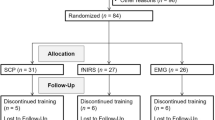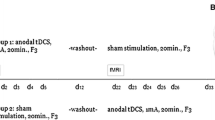Abstract
The recorded EEG of some brain regions of patients such as attention deficit hyperactivity disorder (ADHD), depression and etc. are different in comparison to healthy people. The disease improves with modifying the patient EEG that this is the basis of neurofeedback training. The main disadvantage of neurofeedback training demands patient’s collaborative and active participation during treatment sessions, while some of patients such as addicts, depressed people and ADHD children cannot easily concentrate in direction of therapist’s purpose. Furthermore, extremely low frequency magnetic fields (MFs) can affect brain signals and change them that in some cases lead to clinical effects. This report proposes if by locating small coils in desired region proceeds to local exposure of brain and happens in different frequencies or intensities and the effects of each MF in brain signals get analyzed then by knowing its effects we can make changes in patient voluntary without direct participation of patient in his/her brain signal changes. In the other words by changing type of the MF exposure and immediate record of brain signals we can fallow brain signals by observing the immediate record after exposure, with changes in the amplitude and the next exposure frequency, the therapist tries to direct the brain signal of desired region to the purpose. The possibility of approving this hypothesis in spite of contradictory effects about recovery or appearance of depression because of the MF and ability of local magnetic field exposures in changing of brain signals get reinforced to some extent.

Similar content being viewed by others
References
Guyton AC, Hall JE (2000) Textbook of medical physiology. Saunders, Philadelphia
Fuchs T, Birbaumer N, Lutzenberger W, Gruzelier JH, Kaiser J (2003) Neurofeedback treatment for attention-deficit/hyperactivity disorder in children: a comparison with methylphenidate. Appl Psychophysiol Biofeedback 28(1):1–12
Barnes FS, Greenebaum B (2007) Handbook of biological effects of electromagnetic fields. CRC Press, Boca Raton
Niederhofer H (2008) Effectiveness of the repetitive transcranical magnetic stimulation (rTMS) of 1 Hz for attention-deficit hyperactivity disorder (ADHD). Psychiatr Danub 20(1):91–92
Kuroda Y, Motohashi N, Ito H, Ito S, Takano A, Nishikawa T, Suhara T (2006) Effects of repetitive transcranial magnetic stimulation on [11C]raclopride binding and cognitive function in patients with depression. J Affect Disord 95(1–3):35–42
Santiago-RodrÃ-guez E, Cárdenas-Morales L, Harmony T, Fernández-Bouzas A, Porras-Kattz E, Hernández A (2008) Repetitive transcranial magnetic stimulation decreases the number of seizures in patients with focal neocortical epilepsy. Seizure 17(8):677–683
George MS, Belmaker RH (2007) Transcranial magnetic stimulation in clinical psychiatry. American Psychiatric Pub, Washington DC
Novikov VV, Novikov GV, Fesenko EE (2009) Effect of weak combined static and extremely low-frequency alternating magnetic fields on tumor growth in mice inoculated with the Ehrlich ascites carcinoma. Bioelectromagnetics 30(5):343–351
Gurgul S, Erdal N, Yilmaz SN, Yildiz A, Ankarali H (2008) Deterioration of bone quality by long-term magnetic field with extremely low frequency in rats. Bone 42(1):74–80
Dias AM, van Deusen A (2011) A new neurofeedback protocol for depression. Span J Psychol 14(1):374–384
Stokes DA, Lappin MS (2010) Neurofeedback and biofeedback with 37 migraineurs: a clinical outcome study. Behav Brain Funct 6:9. doi:10.1186/1744-9081-6-9
Vernon D, Egner T, Cooper N, Compton T, Neilands C, Sheri A, Gruzelier J (2003) The effect of training distinct neurofeedback protocols on aspects of cognitive performance. Int J Psychophysiol 47(1):75–85
Hanslmayr S, Sauseng P, Doppelmayr M, Schabus M, Klimesch W (2005) Increasing individual upper alpha power by neurofeedback improves cognitive performance in human subjects. Appl Psychophysiol Biofeedback 30(1):1–10
Buchmann J, Wolters A, Haessler F, Bohne S, Nordbeck R, Kunesch E (2003) Disturbed transcallosally mediated motor inhibition in children with attention deficit hyperactivity disorder (ADHD). Clin Neurophysiol 114(11):2036–2042
Jensen MP, Grierson C, Tracy-Smith V, Bacigalupi SC, Othmer SF (2007) Neurofeedback treatment for pain associated with complex regional pain syndrome type I. J Neurother 11(1):45–53
Othmer SF (2005) Interhemispheric EEG training. J Neurother 9(2):87–96
Bell GB, Marino AA, Chesson AL (1992) Alterations in brain electrical activity caused by magnetic fields: detecting the detection process. Electroencephalogr Clin Neurophysiol 83(6):389–397
Bell GB, Marino AA, Chesson AL (1994) Frequency-specific responses in the human brain caused by electromagnetic fields. J Neurol Sci 123(1–2):26–32
Bell G, Marino A, Chesson A, Struve F (1992) Electrical states in the rabbit brain can be altered by light and electromagnetic fields. Brain Res 570(1–2):307–315
Marino AA, Bell GB, Chesson A (1996) Low-level EMFs are transduced like other stimuli. J Neurol Sci 144(1–2):99–106
Ghione S, Del Seppia C, Mezzasalma L, Bonfiglio L (2005) Effects of 50 Hz electromagnetic fields on electroencephalographic alpha activity, dental pain threshold and cardiovascular parameters in humans. Neurosci Lett 382(1–2):112–117
Lyskov EB, Juutilainen J, Jousmaki V, Partanen J, Medvedev S, Hanninen O (1993) Effects of 45-Hz magnetic fields on the functional state of the human brain. Bioelectromagnetics 14(2):87–95
Heusser K, Tellschaft D, Thoss F (1997) Influence of an alternating 3 Hz magnetic field with an induction of 0.1 millitesla on chosen parameters of the human occipital EEG. Neurosci Lett 239(2–3):57–60
Cook CM, Thomas AW, Prato FS (2004) Resting EEG is affected by exposure to a pulsed ELF magnetic field. Bioelectromagnetics 25(3):196–203
Cook CM, Thomas AW, Keenliside L, Prato FS (2005) Resting EEG effects during exposure to a pulsed ELF magnetic field. Bioelectromagnetics 26(5):367–376
Cook CM, Saucier DM, Thomas AW, Prato FS (2006) Exposure to ELF magnetic and ELF-modulated radiofrequency fields: the time course of physiological and cognitive effects observed in recent studies (2001–2005). Bioelectromagnetics 27(8):613–627
Cook CM, Saucier DM, Thomas AW, Prato FS (2009) Changes in human EEG alpha activity following exposure to two different pulsed magnetic field sequences. Bioelectromagnetics 30(1):9–20
Cvetkovic D, Fang Q, Cosic I (2008) Multiple human electrophysiological responses to extremely low frequency pulsed electromagnetic field exposures: a pilot study. EST J Eng 14(2):138–153
Podd J, Abbott J, Kazantzis N, Rowland A (2002) Brief exposure to a 50 Hz, 100 μT magnetic field: effects on reaction time, accuracy, and recognition memory. Bioelectromagnetics 23(3):189–195
Capone F, Dileone M, Profice P, Pilato F, Musumeci G, Minicuci G, Ranieri F, Cadossi R, Setti S, Tonali PA, Di Lazzaro V (2009) Does exposure to extremely low frequency magnetic fields produce functional changes in human brain? J Neural Transm 116(3):257–265
Pelka RB, Jaenicke C, Gruenwald J (2001) Impulse magnetic-field therapy for migraine and other headaches: a double-blind, placebo-controlled study. Adv Ther 18(3):101–109
Aktas I, Akgun K, Cakmak B (2007) Therapeutic effect of pulsed electromagnetic field in conservative treatment of subacromial impingement syndrome. Clin Rheumatol 26(8):1234–1239
Del Seppia C, Ghione S, Luschi P, Ossenkopp K-P, Choleris E, Kavaliers M (2007) Pain perception and electromagnetic fields. Neurosci Biobehav Rev 31(4):619–642
Dobson J, St. Pierre TG, Schultheiss-Grassi PP, Gregor Wieser H, Kuster N (2000) Analysis of EEC data from weak-field magnetic stimulation of mesial temporal lobe epilepsy patients. Brain Res 868(2):386–391
Fuller M, Wilson CL, Velasco AL, Dunn JR, Zoeger J (2003) On the confirmation of an effect of magnetic fields on the interictal firing rate of epileptic patients. Brain Res Bull 60(1–2):43–52
Sieroń A, Hese RT, Sobiś J, Cieślar G (2004) Estimation of therapeutical efficacy of weak variable magnetic fields with low value of induction in patients with depression. Ocena skuteczności terapeutycznej słabych zmiennych pól magnetycznych o niskiej wartości indukcji u chorych z zaburzeniami depresyjnymi 38(2):217–225
Sobiś J, Jarzab M, Hese RT, Sieroń A, Zyss T, Gorczyca P, Gierlotka Z, Pudlo R, Matysiakiewicz J (2010) Therapeutic efficacy assessment of weak variable magnetic fields with low value of induction in patients with drug-resistant depression. J Affect Disord 123(1–3):321–326
Van Wijngaarde E, Savitz DA, Kleckner RC, Cai J, Loomis D (2000) Exposure to electromagnetic fields and suicide among electric utility workers: a nested case-control study. West J Med 173(2):94–100
Verkasalo PK, Kaprio J, Varjonen J, Romanov K, Heikkilä K, Koskenvuo M (1997) Magnetic fields of transmission lines and depression. Am J Epidemiol 146(12):1037–1045
Yousefi HA, Nasiri P (2006) Psychological effects of occupational exposure to electromagnetic fields. J Res Health Sci 6(1):18–21
International Radiation Protection Association IN-IRC (1990) Interim guidelines on limits of exposure to 50/60 Hz electric and magnetic fields. Health Phys 58(1)
Cook CM, Thomas AW, Prato FS (2002) Human electrophysiological and cognitive effects of exposure to ELF magnetic and ELF modulated RF and microwave fields: a review of recent studies. Bioelectromagnetics 23(2):144–157
Darabi SAS, Firoozabadi SM, Tabatabaie KR, Ghabaee M (2011) EEG changes during exposure to extremely low frequency magnetic field on a small area of brain. Koomesh 12 (2):167–174
Shafiei SA, Firoozabadi SM, Rasoulzadeh Tabatabaie K, Ghabaee M (2012) Study of the frequency parameters of EEG influenced by zone-dependent local ELF-MF exposure on the human head. Electromagn Biol Med 31(2):112–121. doi:10.3109/15368378.2011.624658
Shafiei SA, Firoozabadi SM, Tabatabaie KR, Ghabaee M (2011) Investigation of resonance effect caused by exposure of local extremely low frequency magnetic field on brain signals. Qom Univ Med Sci J 5(1):53–60
Shafiei SA, Firoozabadi SM, Tabatabaie KR, Ghabaee M (2012) Evaluating the changes in alpha-1 band due to exposure to magnetic field. Iran J Med Phys 9 (2A):141–152
Shafiei SA, Firoozabadi SM, Tabatabaie KR, Ghabaee M (2014) Investigation of EEG changes during exposure to extremely low-frequency magnetic field to conduct brain signals. Neurol Sci. doi:10.1007/s10072-014-1819-0
Amirifalah Z, Firoozabadi SMP, Darabi AS, Assadi A (2011) Scrutiny of brain signals variations in regions Cz, C3 and C4 under local exposure of extremely low frequency and weak pulsed magnetic field to promote neurofeedback systems. Physiol Pharmacol 15(1):144–163
Amirifalah Z, Firoozabadi SM, Shafiei SA (2013) Local exposure of brain central areas to a pulsed ELF magnetic field for a purposeful change in EEG. Clin EEG Neurosci 44(1):44–52. doi:10.1177/1550059412460164
Zandi Mehran Y, Firoozabadi M, Rostami R (2014) Improvement of neurofeedback therapy for improved attention through facilitation of brain activity using local sinusoidal extremely low frequency magnetic field exposure. Clin EEG Neurosci. doi:10.1177/1550059414524403
Acknowledgments
Special thanks to S.A Sabbagh for editing this manuscript.
Author information
Authors and Affiliations
Corresponding author
Rights and permissions
About this article
Cite this article
Shafiei, S.A., Firoozabadi, S.M. Local ELF-magnetic field: a possible novel therapeutic approach to psychology symptoms. Neurol Sci 35, 1651–1656 (2014). https://doi.org/10.1007/s10072-014-1905-3
Received:
Accepted:
Published:
Issue Date:
DOI: https://doi.org/10.1007/s10072-014-1905-3




